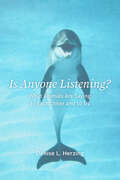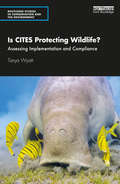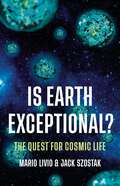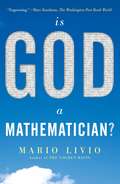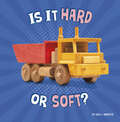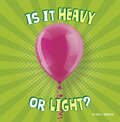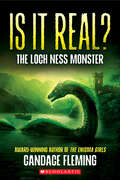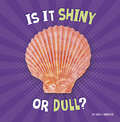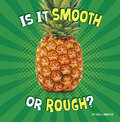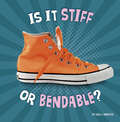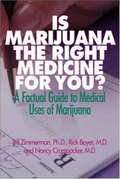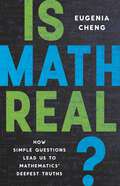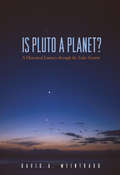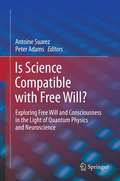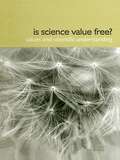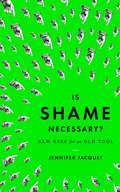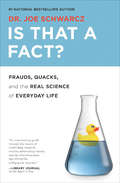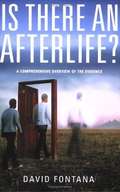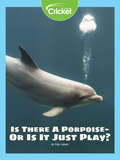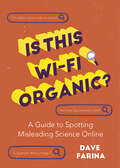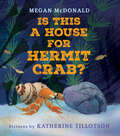- Table View
- List View
Is American Science in Decline?
by Yu Xie Alexandra A. KillewaldAlarmists argue that the United States urgently needs more and better-trained scientists to compete with the rest of the world. Their critics counter that, far from facing a shortage, we are producing a glut of young scientists with poor employment prospects. Both camps have issued reports in recent years that predict the looming decline of American science. Drawing on their extensive analysis of national data sets, Yu Xie and Alexandra Killewald have welcome news to share: American science is in good health. Is American Science in Decline? does reveal areas of concern, namely scientistsâ low earnings, the increasing competition they face from Asia, and the declining number of doctorates who secure academic positions. But the authors argue that the values inherent in American culture make the country highly conducive to science for the foreseeable future. They do not see globalization as a threat but rather a potential benefit, since it promotes efficiency in science through knowledge-sharing. In an age when other countries are catching up, American science will inevitably become less dominant, even though it is not in decline relative to its own past. As technology continues to change the American economy, better-educated workers with a range of skills will be in demand. So as a matter of policy, the authors urge that science education not be detached from general education.
Is Anyone Listening?: What Animals Are Saying to Each Other and to Us
by Denise L. HerzingFrom a leading researcher on dolphin communication, a deep dive into the many ways animal species communicate with their kin, their neighboring species, and us. If you could pose one question to a dolphin, what would it be? And what might a dolphin ask you? For forty years, researcher and author Denise L. Herzing has investigated these and related questions of marine mammal communication. With the assistance of a friendly community of Atlantic spotted dolphins in the Bahamas, Herzing studies two-way communication between different dolphin species and between humans and dolphins using a variety of cutting-edge experiments. But the dolphins are not the only ones talking, and in this wide-ranging and accessible book, Herzing explores the astonishing realities of interspecies communication, a skill that humans currently lack. Is Anyone Listening? connects research on dolphin communication to findings from Jane Goodall on chimpanzees, Dian Fossey on mountain gorillas, Cynthia Moss on African elephants, and others driving today’s exploration of possible animal languages. Although humans have long attempted to crack animal communication codes, only now do we have the advanced machine-learning tools to help. As Herzing reveals, researchers are finding fascinating hints of language in nonhuman species, including linguistic structures, vowel equivalents, and complex repeated sequences. By looking at the many ways animals use and manipulate signals, we see that we’ve only just begun to appreciate the diversity of animal intelligence and the complicated and subtle aspects of animal communication. Considering dolphins and other nonhuman animals as colleagues instead of research subjects, Herzing asks us to meet animals as both speakers and listeners, as mutually curious beings, and to listen to what they are saying.
Is CITES Protecting Wildlife?: Assessing Implementation and Compliance (Routledge Studies in Conservation and the Environment)
by Tanya WyattThis book assesses the Convention on International Trade in Endangered Species of Wild Fauna and Flora (CITES), examining both implementation and compliance. Humans are causing a biodiversity crisis, where 1 million species are facing extinction. Species are dying, in no small part, because they are overexploited, poached and trafficked and CITES is the main international instrument designed to protect traded wildlife. Does the state of the world’s species mean CITES is failing? This book explores the implementation of and compliance with CITES by all 183 member countries. It is imperative we know the nature and extent of the implementation of and compliance with CITES legislation in all parties to fully understand the impact of legal and illegal trade on species survival. Through extensive legislative content analysis, a Delphi iterative survey, and semi-structured interviews, this is the first book to share empirical research about CITES implementation and compliance. This book contains a comprehensive analysis of the state of CITES, what is done well, what could be done better, and what the future might bring to try to curtail the slide of the world’s wildlife into extinction. By identifying lessons learned in relation to CITES legislation, implementation and compliance this book provides hard evidence to member countries as to how their own practice can be improved. This timely book will be essential reading for students and academics interested in wildlife law, trade and trafficking, green criminology and biodiversity conservation more broadly. It will also be of interest to professionals working in wildlife law enforcement.
Is Earth Exceptional?: The Quest for Cosmic Life
by Mario Livio Jack SzostakA New York Times–bestselling astrophysicist and a Nobel laureate take us on "a mesmerizing exploration" (Jennifer Doudna) to discover how and where the universe breathed itself into life For a long time, scientists have wondered how life has emerged from inanimate chemistry, and whether Earth is the only place where it exists. Charles Darwin speculated about life on Earth beginning in a warm little pond. Some of his contemporaries believed that life existed on Mars. It once seemed inevitable that the truth would be known by now. It is not. For more than a century, the origins and extent of life have remained shrouded in mystery. But, as Mario Livio and Jack Szostak reveal in Is Earth Exceptional?, the veil is finally lifting. The authors describe how life&’s building blocks—from RNA to amino acids and cells—could have emerged from the chaos of Earth&’s early existence. They then apply the knowledge gathered from cutting-edge research across the sciences to the search for life in the cosmos: both life as we know it and life as we don&’t. Why and where life exists are two of the biggest unsolved problems in science. Is Earth Exceptional? is the ultimate exploration of the question of whether life is a freak accident or a chemical imperative.
Is God a Mathematician?
by Mario LivioBestselling author and astrophysicist Mario Livio examines the lives and theories of history’s greatest mathematicians to ask how—if mathematics is an abstract construction of the human mind—it can so perfectly explain the physical world.Nobel Laureate Eugene Wigner once wondered about “the unreasonable effectiveness of mathematics” in the formulation of the laws of nature. Is God a Mathematician? investigates why mathematics is as powerful as it is. From ancient times to the present, scientists and philosophers have marveled at how such a seemingly abstract discipline could so perfectly explain the natural world. More than that—mathematics has often made predictions, for example, about subatomic particles or cosmic phenomena that were unknown at the time, but later were proven to be true. Is mathematics ultimately invented or discovered? If, as Einstein insisted, mathematics is “a product of human thought that is independent of experience,” how can it so accurately describe and even predict the world around us? Physicist and author Mario Livio brilliantly explores mathematical ideas from Pythagoras to the present day as he shows us how intriguing questions and ingenious answers have led to ever deeper insights into our world. This fascinating book will interest anyone curious about the human mind, the scientific world, and the relationship between them.
Is It Hard or Soft? (Properties of Materials)
by Lisa J. AmstutzA nail is hard. A cotton ball is soft. Why are some objects hard and others soft? Find out in this series about materials and their properties. Informative, at-level text and engaging photographs help readers understand the differences between hard and soft materials.
Is It Heavy or Light? (Properties of Materials)
by Lisa J. AmstutzA bowling ball is heavy. A feather is light. Why are some items heavy and others light? Find out in this series about materials and their properties. Informative, at-level text and engaging photographs help readers understand the differences between heavy and light materials.
Is It Possible? What Is Color? (Into Reading, Level T #51)
by Pamela Rushby Andrew Craig Wayne Bryant Nives PorcellatoNIMAC-sourced textbook
Is It Real? The Loch Ness Monster
by Candace FlemingPut on your detective hat and prepare all your investigative tools, because you've been assigned a new case to solve: the mystery of the Loch Ness Monster!Follow along as award-winning author Candace Fleming uses all of her nonfiction tools and storytelling prowess to investigate the enduring mystery surrounding the existence of the Loch Ness Monster.Nestled in the lush green hills of the Scotland Highlands lies Loch Ness, a deep, murky lake with a storied history. It is also the home of the Loch Ness Monster. Numerous stories and photographs by people claiming to have spotted the mysterious monster have surfaced, often gaining immediate fame. But after decades of countless expeditions, documentaries, firsthand accounts, pictures, and videos, the mystery of Nessie continues to haunt us.Now, Sibert Award-winning author Candace Fleming invites you to become a detective and to join the race to uncover the truth. You'll learn how real-life detectives and scientists conduct their investigations to solve the greatest mysteries as the principles of the Scientific Method and more tools for boosting critical thinking and analysis are introduced. You will consider the evidence, see if you can tell the difference between fact and fiction, and maybe you can answer this age-old question about the Loch Ness monster: Is it real?
Is It Shiny or Dull? (Properties of Materials)
by Lisa J. AmstutzA diamond is shiny. A brick wall is dull. Why are some objects shiny and others dull? Find out in this series about materials and their properties. Informative, at-level text and engaging photographs help readers understand the differences between shiny and dull objects.
Is It Smooth or Rough? (Properties of Materials)
by Lisa J. AmstutzA piece of silk is smooth. Tree bark is rough. Why are some objects smooth and others rough? Find out in this series about materials and their properties. Informative, at-level text and engaging photographs help readers understand the differences between smooth and rough objects.
Is It Stiff or Bendable? (Properties of Materials)
by Lisa J. AmstutzA pencil is stiff. A rubber band is bendable. Why are some objects stiff and others bendable? Find out in this series about materials and their properties. Informative, at-level text and engaging photographs help readers understand the differences between stiff and bendable objects.
Is Marijuana the Right Medicine for You? A Factual Guide To Medical Uses Of Marijuana
by Nancy Crumpacker Rick Bayer Bill ZimmermanBecause of the general submect matter, and because of the diseases which are discussed, parental involvement is recommended should a person under eighteen want to read this book. From the Book Jacket: Written by scientist Bill zimmerman A view of marijuana as medicine. It cuts through the controversy and focuses solely on the facts. * Learn how patients can safely use marijuana * Find out how marijuana can be a more effective alternative to synthetic drugs * Learn how marijuana has already helped relieve the suffering of thousands of patients * Discover how this natural herb may be used by patients suffering from a variety of diseases. Although the primary focus of this book is to promote the medicinal uses of marijuana, the authors do include a chapter which addresses the negative health consequences of its use and exposure to its use.
Is Math Real?: How Simple Questions Lead Us to Mathematics' Deepest Truths
by Eugenia ChengOne of the world&’s most creative mathematicians offers a &“brilliant&” and &“mesmerizing&” (Popular Science) new way to look at math—focusing on questions, not answers Winner of the Los Angeles Times Book Prize and a New Scientist Best Book of the Year Where do we learn math: From rules in a textbook? From logic and deduction? Not really, according to mathematician Eugenia Cheng: we learn it from human curiosity—most importantly, from asking questions. This may come as a surprise to those who think that math is about finding the one right answer, or those who were told that the &“dumb&” question they asked just proved they were bad at math. But Cheng shows why people who ask questions like &“Why does 1 + 1 = 2?&” are at the very heart of the search for mathematical truth. Is Math Real? is a much-needed repudiation of the rigid ways we&’re taught to do math, and a celebration of the true, curious spirit of the discipline. Written with intelligence and passion, Is Math Real? brings us math as we&’ve never seen it before, revealing how profound insights can emerge from seemingly unlikely sources.
Is Pluto a Planet?
by David A. WeintraubA Note from the Author: On August 24, 2006, at the 26th General Assembly of the International Astronomical Union (IAU) in Prague, by a majority vote of only the 424 members present, the IAU (an organization of over 10,000 members) passed a resolution defining planet in such a way as to exclude Pluto and established a new class of objects in the solar system to be called "dwarf planets," which was deliberately designed to include Pluto. With the discovery of Eris (2003 UB313)--an outer solar system object thought to be both slightly larger than Pluto and twice as far from the Sun--astronomers have again been thrown into an age-old debate about what is and what is not a planet. One of many sizeable hunks of rock and ice in the Kuiper Belt, Eris has resisted easy classification and inspired much controversy over the definition of planethood. But, Pluto itself has been subject to controversy since its discovery in 1930, and questions over its status linger. Is it a planet? What exactly is a planet? Is Pluto a Planet? tells the story of how the meaning of the word "planet" has changed from antiquity to the present day, as new objects in our solar system have been discovered. In lively, thoroughly accessible prose, David Weintraub provides the historical, philosophical, and astronomical background that allows us to decide for ourselves whether Pluto is indeed a planet. The number of possible planets has ranged widely over the centuries, from five to seventeen. This book makes sense of it all--from the ancient Greeks' observation that some stars wander while others don't; to Copernicus, who made Earth a planet but rejected the Sun and the Moon; to the discoveries of comets, Uranus, Ceres, the asteroid belt, Neptune, Pluto, centaurs, the Kuiper Belt and Eris, and extrasolar planets. Weaving the history of our thinking about planets and cosmology into a single, remarkable story, Is Pluto a Planet? is for all those who seek a fuller understanding of the science surrounding both Pluto and the provocative recent discoveries in our outer solar system.
Is Science Compatible with Free Will?
by Antoine Suarez Peter AdamsAnyone who claims the right 'to choose how to live their life' excludes any purely deterministic description of their brain in terms of genes, chemicals or environmental influences. For example, when an author of a text expresses his thoughts, he assumes that, in typing the text, he governs the firing of the neurons in his brain and the movement of his fingers through the exercise of his own free will: what he writes is not completely pre-determined at the beginning of the universe. Yet in the field of neuroscience today, determinism dominates. There is a conflict between the daily life conviction that a human being has free will, and deterministic neuroscience. When faced with this conflict two alternative positions are possible: Either human freedom is an illusion, or deterministic neuroscience is not the last word on the brain and will eventually be superseded by a neuroscience that admits processes not completely determined by the past. This book investigates whether it is possible to have a science in which there is room for human freedom. The book generally concludes that the world and the brain are governed to some extent by non-material agencies, and limited consciousness does not abolish free will and responsibility. The authors present perspectives coming from different disciplines (Neuroscience, Quantumphysics and Philosophy) and range from those focusing on the scientific background, to those highlighting rather more a philosophical analysis. However, all chapters share a common characteristic: they take current scientific observations and data as a basis from which to draw philosophical implications. It is these features that make this volume unique, an exceptional interdisciplinary approach combining scientific strength and philosophical profundity. We are convinced that it will strongly stimulate the debate and contribute to new insights in the mind-brain relationship.
Is Science Multicultural? Postcolonialisms, Feminisms, and Epistemologies
by Sandra HardingThis book explores what the last three decades of European/American, feminist, and postcolonial science and technology studies can learn from each other. Sandra introduces and discusses an array of postcolonial science studies.
Is Science Value Free?: Values and Scientific Understanding (Philosophical Issues in Science)
by Hugh LaceyExploring the role of values in scientific inquiry, Hugh Lacey examines the nature and meaning of values, and looks at challenges to the view, posed by postmodernists, feminists, radical ecologists, Third-World advocates and religious fundamentalists, that science is value free. He also focuses on discussions of 'development', especially in Third World countries. This paperback edition includes a new preface.
Is Shame Necessary?
by Jennifer JacquetAn urgent, illuminating exploration of the social nature of shame and of how it might be used to promote large-scale political change and social reform. In cultures that champion the individual, guilt is advertised as the cornerstone of conscience. But while guilt holds individuals to personal standards, it is powerless in the face of corrupt institutions. In recent years, we as consumers have sought to assuage our guilt about flawed social and environmental practices and policies by, for example, buying organic foods or fair-trade products. Unless nearly everyone participates, however, the impact of individual consumer consciousness is ineffective. Is Shame Necessary? presents us with a trenchant case for public shaming as a nonviolent form of resistance that can challenge corporations and even governments to change policies and behaviors that are detrimental to the environment. Jennifer Jacquet argues that public shaming, when it has been retrofitted for the age of social media and aimed in the proper direction, can help compensate for the limitations of guilt in a globalized world. Jacquet leaves us with a new understanding of how public shame, when applied in the right way and at the right time, has the capacity to keep us from failing other species in life's fabric and, ultimately, from failing ourselves.From the Hardcover edition.
Is That a Fact?: Frauds, Quacks, and the Real Science of Everyday Life
by Dr. Joe SchwarczThe bestselling &“quackbuster&” and &“tireless tub-thumper against pseudoscience&” fishes for the facts in a flood of misinformation (Maclean&’s). Eat this and live to 100. Don&’t, and die. Today, hyperboles dominate the media, which makes parsing science from fiction an arduous task when deciding what to eat, what chemicals to avoid, and what&’s best for the environment. In Is That a Fact?, bestselling author Dr. Joe Schwarcz carefully navigates through the storm of misinformation to help us separate fact from folly and shrewdness from foolishness. Are GMOs really harmful? Or could they help developing countries? Which &“miracle weight-loss foods&” gained popularity through exuberant data dredging? Is BPA dangerous or just a victim of unforgiving media hype? Is organic better? Schwarcz questions the reliability and motives of &“experts&” in this &“easy-to-understand yet critical look at what&’s fact and what&’s plain nonsense. &“Takes its readers through the carnival of pseudoscience, the morass of half-truths and, finally, the relatively safe road of reproducible scientific knowledge. This journey is made all the more enjoyable by Dr. Schwarcz&’s surgical use of words and his mastery of public writing . . . [He] can always be counted on to write about the chemistry of the world in a way that is both entertaining and educational.&” —Cracked Science &“Written with a light touch and refreshing humor, this book provides a solid, authoritative starting point for anyone beginning to look at the world with a skeptical eye and a refresher for those further along that path.&” —Library Journal
Is There An Afterlife? A Comprehensive Overview of the Evidence
by David FontanaA detailed overview for the evidence for the existence of spirits and the afterlife.
Is There Life in Outer Space?
by Edward Miller Franklyn M. Branley BranleyLife In Outer Space Bears and birds, people and planets -- many things live on planet Earth. But do they live anywhere else? For a long time people have wondered about that. Maybe you have, too. Read and find out how scientists search for signs of life in outer space.
Is There a "Porpoise"—Or Is It Just Play?
by Peg LopataAs dolphins flip, whirling through blue waters and creating bubbles with their dorsal fins, scientists study if this playful act is fun and not just instinctual behavior, or as some marine psychologists believe, that porpoises practice hunting skills. Enjoy discovering what dolphins learn through playing games like “keep away” in our oceans and freshwater rivers!
Is This Wi-Fi Organic?: A Guide to Spotting Misleading Science Online
by Dave FarinaHow to separate facts from fake science in the Disinformation Age: “Cuts through the chaos . . . sure to keep you laughing while also keeping you thinking.” —Matt Candeias, PhD, author of In Defense of PlantsWe live in an era when scams, frauds, fake news, fake stories, fake science, and false narratives are everywhere. Fortunately, you don’t need a BS in Science to spot science BS. This guide from educator Dave Farina, aka YouTube’s Professor Dave, is a playful yet practical investigation of popular opinions and consumer trends that permeate our society. Shoppers insist on “organic” everything even if they’re unable to define the term. Healers and quantum mystics secure a foothold alongside science-based medicine in an unregulated and largely unchallenged landscape. Misleading marketing is used to sell you products and services that range from ineffectual to downright dangerous.With the knowledge gained from Dave Farina’s simple explanations of basic scientific principles, you can learn to spot misinformation and lies on the internet before they spot you. Learn the real science behind such semi-controversial subjects as drugs, vaccines, energy, and biotechnology—and most importantly, arm yourself with the critical-thinking skills everyone needs in a world filled with nonsense.“Scientific literacy is our best defense in an age of increasing disinformation.” —Kellie Gerardi, aerospace professional and author of Not Necessarily Rocket Science
Is This a House for Hermit Crab?
by Megan McDonaldFollow a hermit crab on the perilous journey to replace his outgrown shell in this classic picture book by the author of the popular Judy Moody and Stink series.Hermit Crab has outgrown his shell, and it&’s time for a new home to keep him safe from predators. The beach is strewn with possible choices, but none are quite right. A rock is too heavy; a tin can is too noisy; a fishing net has too many holes. He stepped along the shore,by the sea, in the sand . . .scritch-scratch, scritch-scratchWhen a giant wave sends Hermit Crab careening toward a hungry porcupine fish, will he find a hiding place in time? Katherine Tillotson&’s immersive artwork breathes new life into this classic text by Megan McDonald, beloved author of the Judy Moody series. Brand-new backmatter provides further learning about all things hermit crab.A Junior Library Guild Gold Standard Selection

